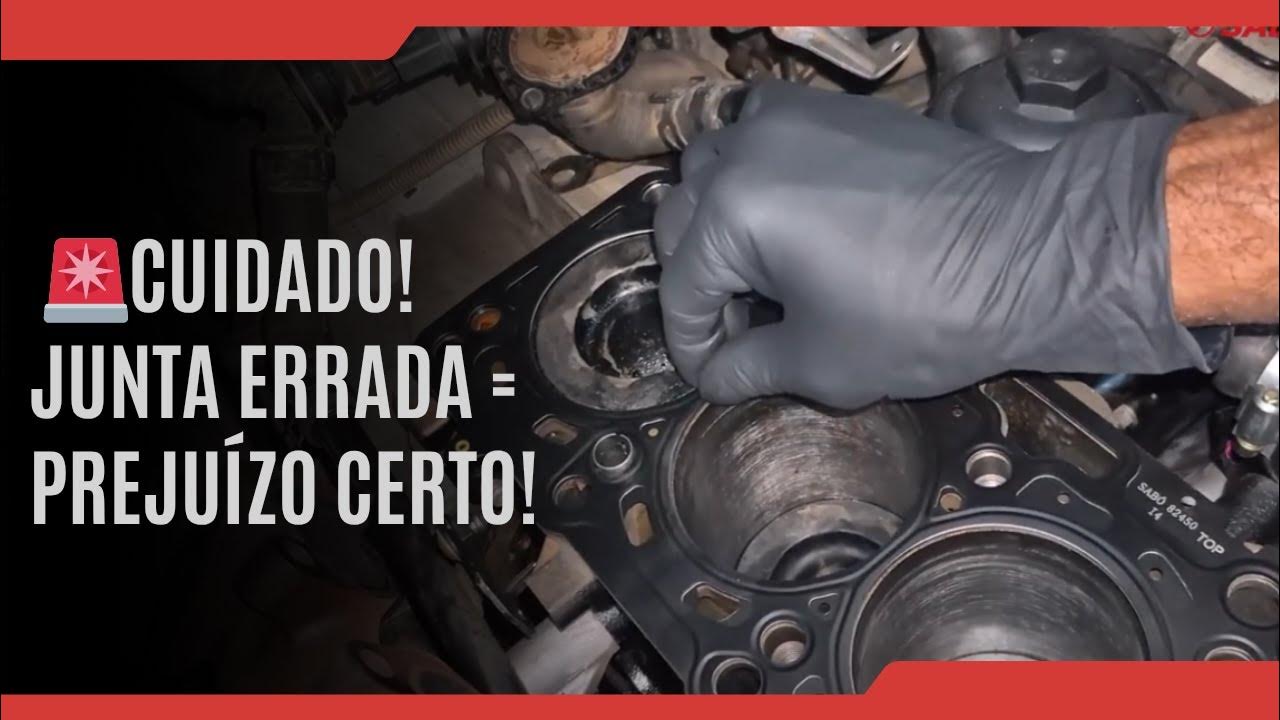Cylinder Head Warpage Check - How to Measure Warpage
Summary
TLDRIn this instructional video, the host demonstrates how to check for warpage in a car's cylinder head deck and block deck, which is crucial after suspecting a head gasket issue. The video emphasizes the importance of using a precision straight edge tool for accurate measurement, as a warped deck can lead to serious engine problems. The host shows how to use a feeler gauge to measure the maximum allowable warpage and discusses the consequences of a warped head, such as coolant leaks. The video also covers the process of resurfacing the head and installing a new gasket to ensure the engine's proper functioning.
Takeaways
- ⚙️ The video demonstrates how to check the straightness of the head deck and cylinder block deck for warpage, which is crucial after suspecting a head gasket issue.
- 🔍 A flat bar, not a straight edge or level, should be used for checking straightness due to its precision within 0.0005%, ensuring an accurate measurement.
- 📏 The maximum allowable warpage for the specific car model discussed is 0.05 millimeters, highlighting the importance of adhering to manufacturer specifications.
- 🛠️ The process involves placing the flat bar in different orientations (horizontal, diagonal) across the deck to check for any gaps that exceed the maximum spec.
- 🔧 If the maximum feeler gauge slides under at any point, it indicates the deck is out of spec and requires milling.
- 👀 It's important to check the deck in multiple directions, especially in the center, as this is a common area for warping.
- 🚫 The video warns against using inaccurate tools like levels for this task, as they are not perfectly straight and can lead to incorrect assessments.
- 💧 The script mentions a case where the engine block and head were warped, possibly due to low coolant or undetected cooling leaks, emphasizing the need for regular maintenance checks.
- 🚗 The car in the video is a 2010 Mazda with a 2.0 non-turbo engine, providing context for the specific application of the demonstrated technique.
- 🔄 After milling the head, the video suggests using a new head gasket, head bolts, and tightening them in the proper sequence to ensure a proper seal and prevent future issues.
Q & A
What is the main topic of the video?
-The main topic of the video is how to check the straightness of the head deck, cylinder head deck, and block deck for warpage, especially after suspecting a head gasket issue.
What is the maximum allowable warpage for the car discussed in the video?
-The maximum allowable warpage for the car in the video is 0.05 millimeters.
Why is it important to check for warpage after removing a head gasket?
-Checking for warpage is important after removing a head gasket to ensure the surfaces are flat and will seal properly, preventing future leaks and engine damage.
What tool is recommended for checking the straightness of the deck?
-A flat bar with a straight edge that is straight within 0.0005 percent is recommended for checking the straightness of the deck.
Why shouldn't a straight edge or level be used for this inspection?
-A straight edge or level shouldn't be used because they are not perfectly straight and may not provide accurate measurements, which is critical for detecting warpage.
How does the presenter check the deck for warpage?
-The presenter checks the deck for warpage by placing the flat bar horizontally and diagonally across the deck and using a feeler gauge to measure any gaps according to the manufacturer's specifications.
What is the maximum feeler gauge measurement the presenter starts with?
-The presenter starts with a feeler gauge measurement of 2,000, which is the maximum allowed by the manufacturer.
What does the presenter do if the maximum feeler gauge slides in anywhere on the deck?
-If the maximum feeler gauge slides in anywhere on the deck, the presenter determines that the deck is out of spec and needs to be milled.
Why does the presenter check the deck in multiple directions?
-The presenter checks the deck in multiple directions to ensure that any warpage, even slight, is detected as it can affect the sealing of the head gasket.
What is the condition of the head gasket shown in the video?
-The head gasket shown in the video is in poor condition, with significant leaks visible around the cylinder, indicating warpage and the need for replacement.
What is the car model discussed in the video?
-The car model discussed in the video is a 2010 Mazda with a 2.0 non-turbo engine.
Outlines

This section is available to paid users only. Please upgrade to access this part.
Upgrade NowMindmap

This section is available to paid users only. Please upgrade to access this part.
Upgrade NowKeywords

This section is available to paid users only. Please upgrade to access this part.
Upgrade NowHighlights

This section is available to paid users only. Please upgrade to access this part.
Upgrade NowTranscripts

This section is available to paid users only. Please upgrade to access this part.
Upgrade NowBrowse More Related Video

Como definir a altura da junta de cabeçote Amarok

How to Rebuild Small Block Chevy 350 5.7L Cylinder Heads

엔진과열!오버히트! 그 후 최악의 상황 / 포르쉐 파나메라

NTK - Engine Cylinder Head Temperature Sensor

Nama-nama komponen mesin mobil | Otomotif

🤬 BASTA😡 No encontramos lo que le pasa a Megancete [CANSADOS 😭 por NO llegar a una SOLUCIÓN]
5.0 / 5 (0 votes)